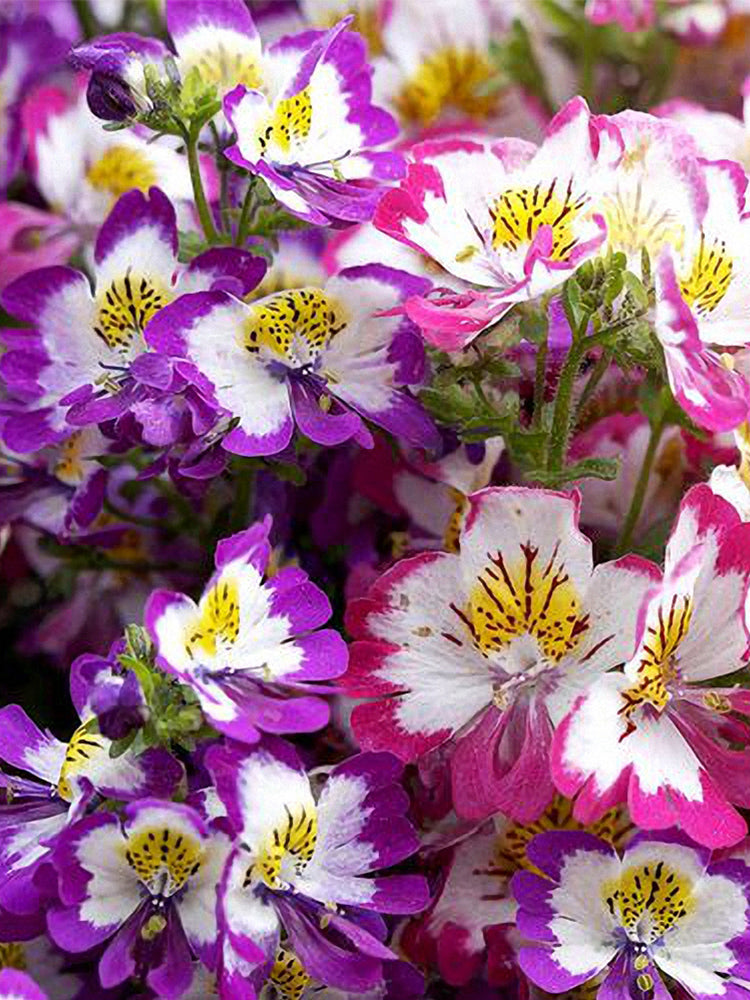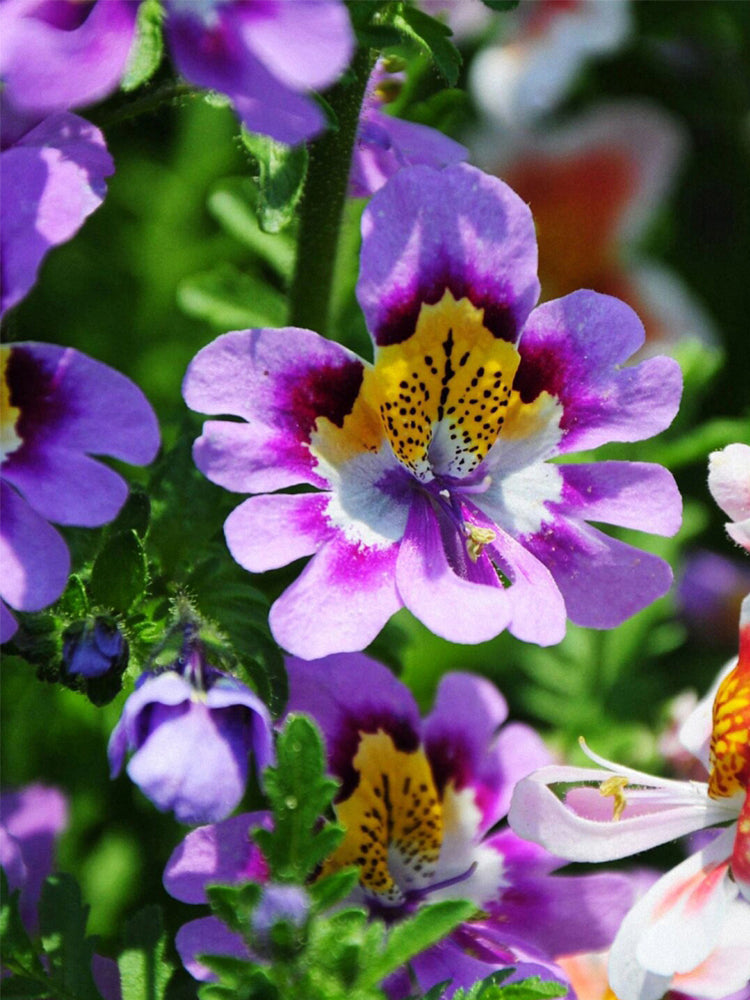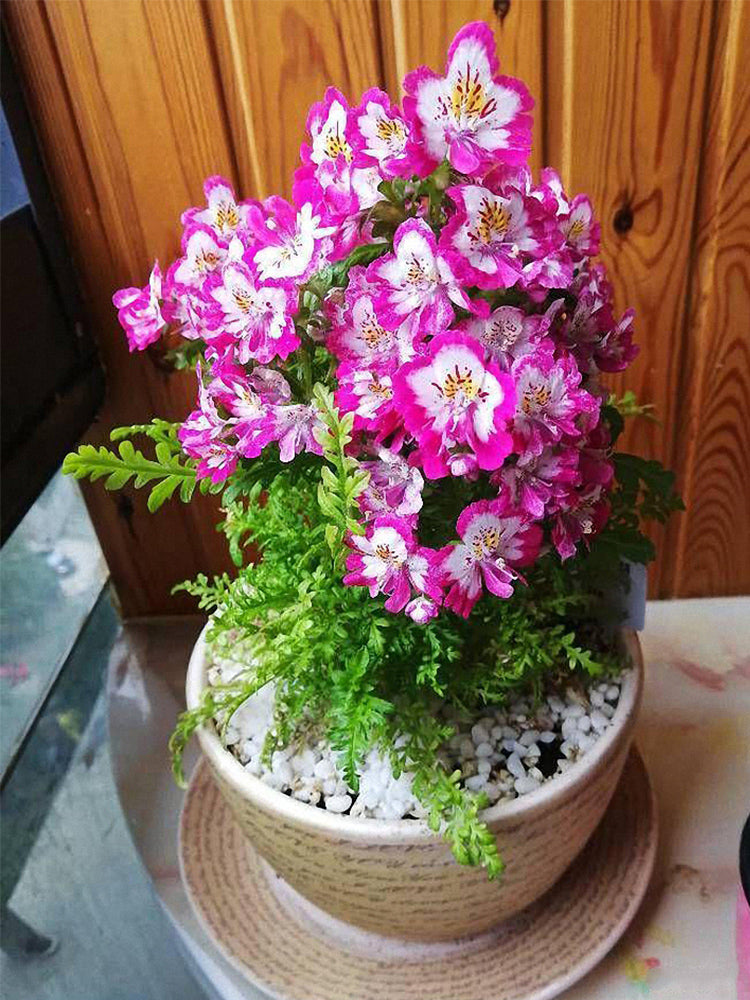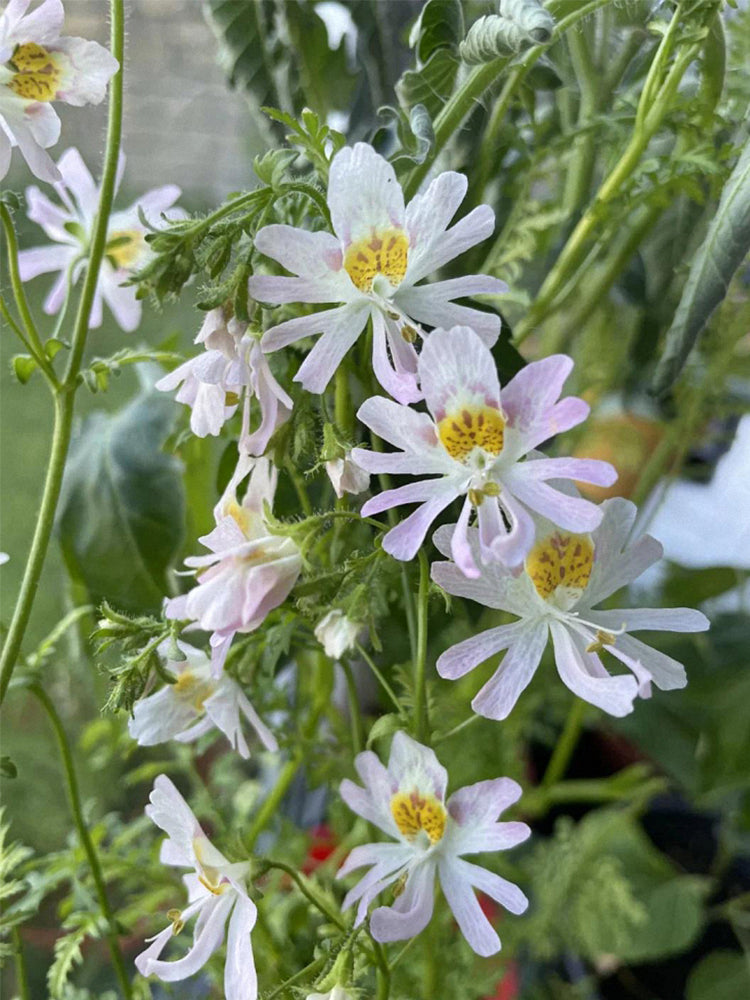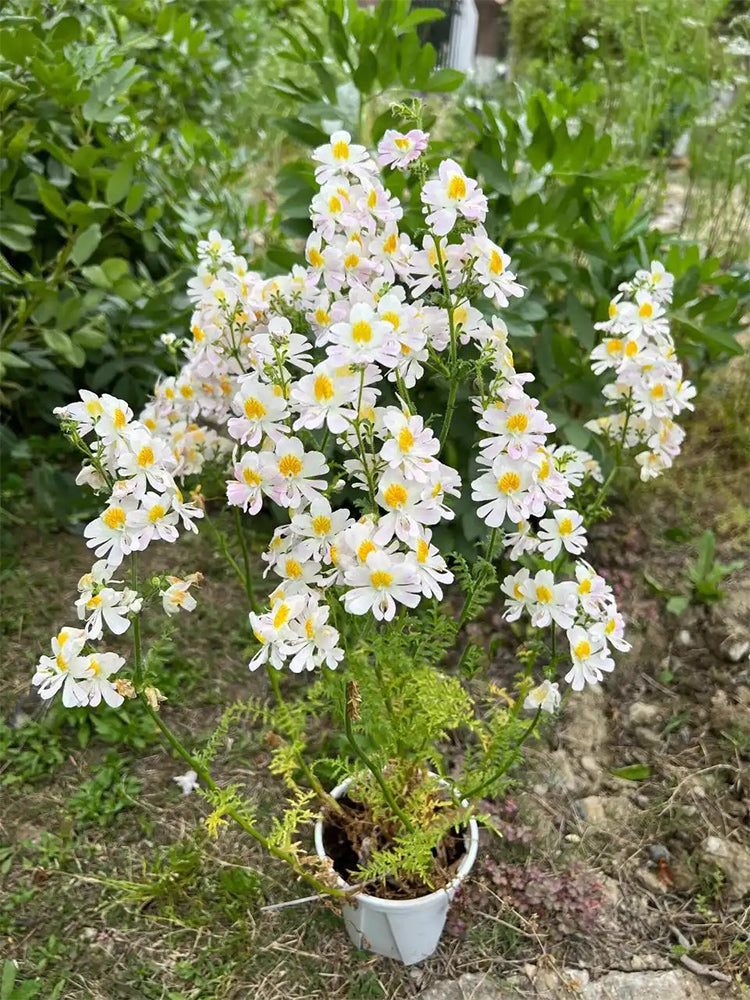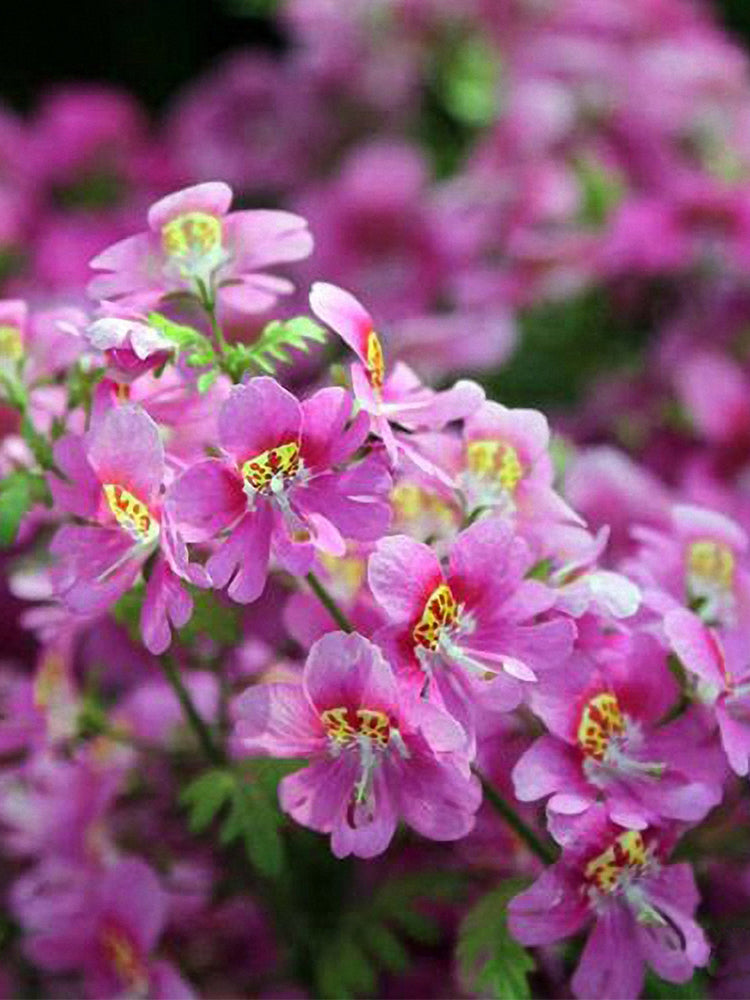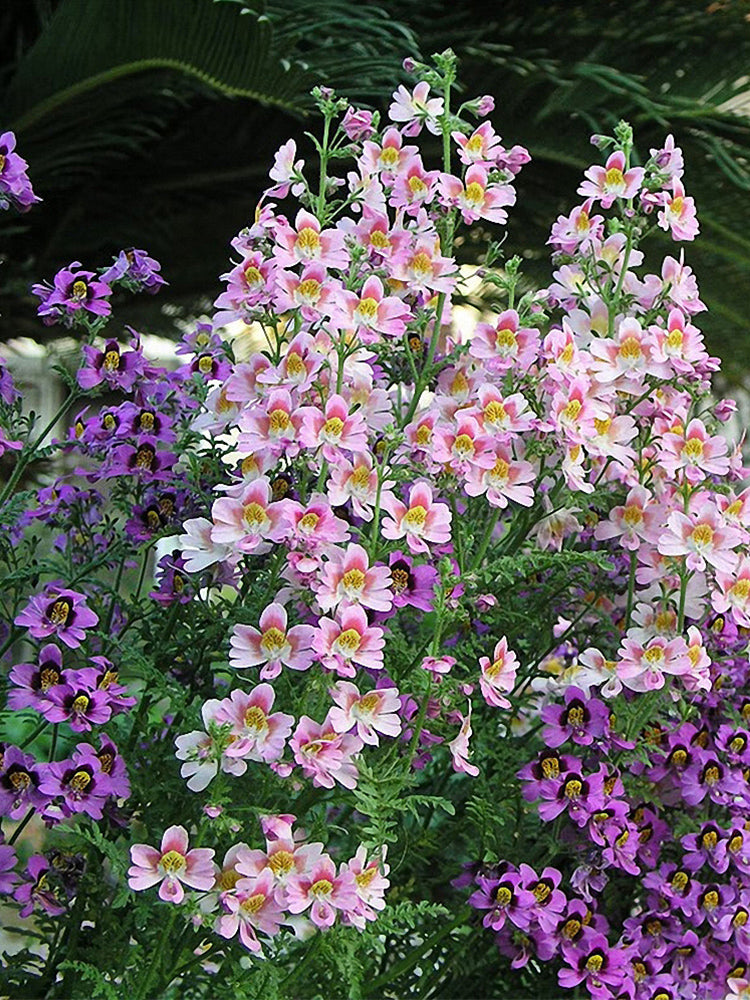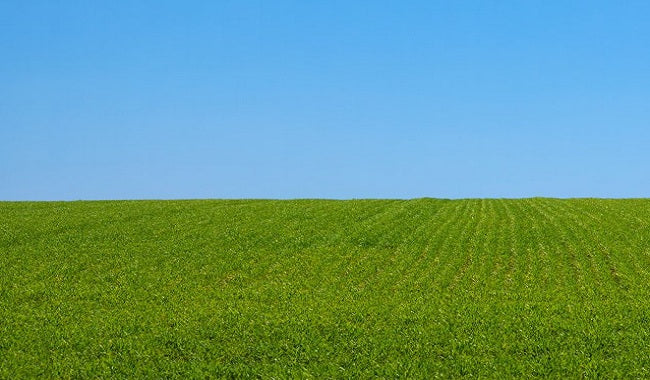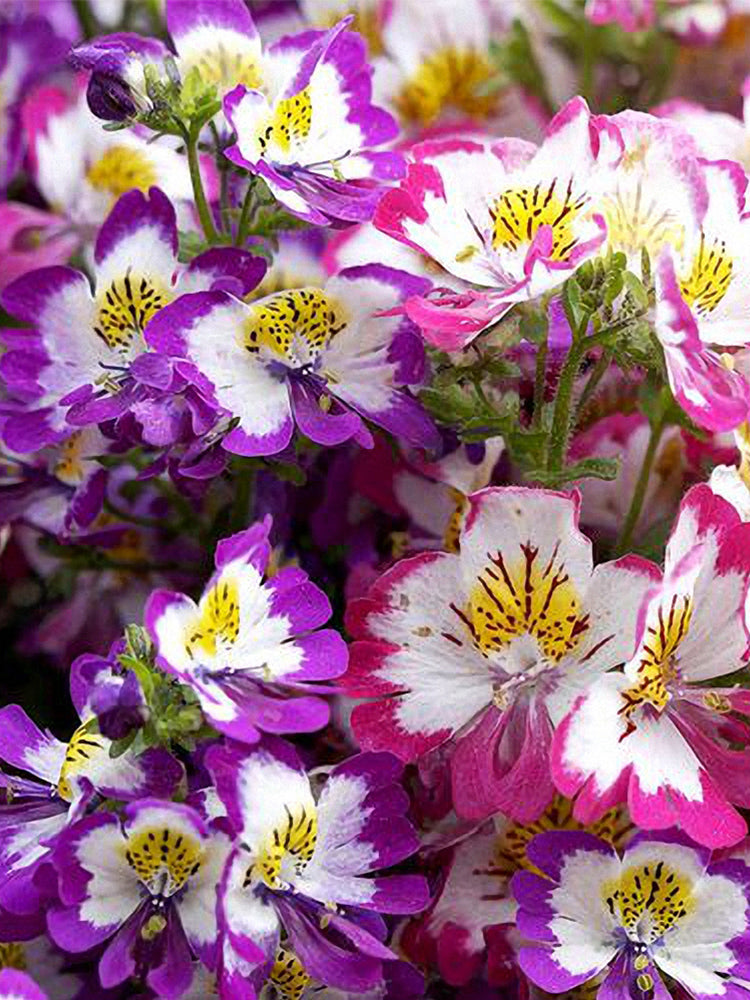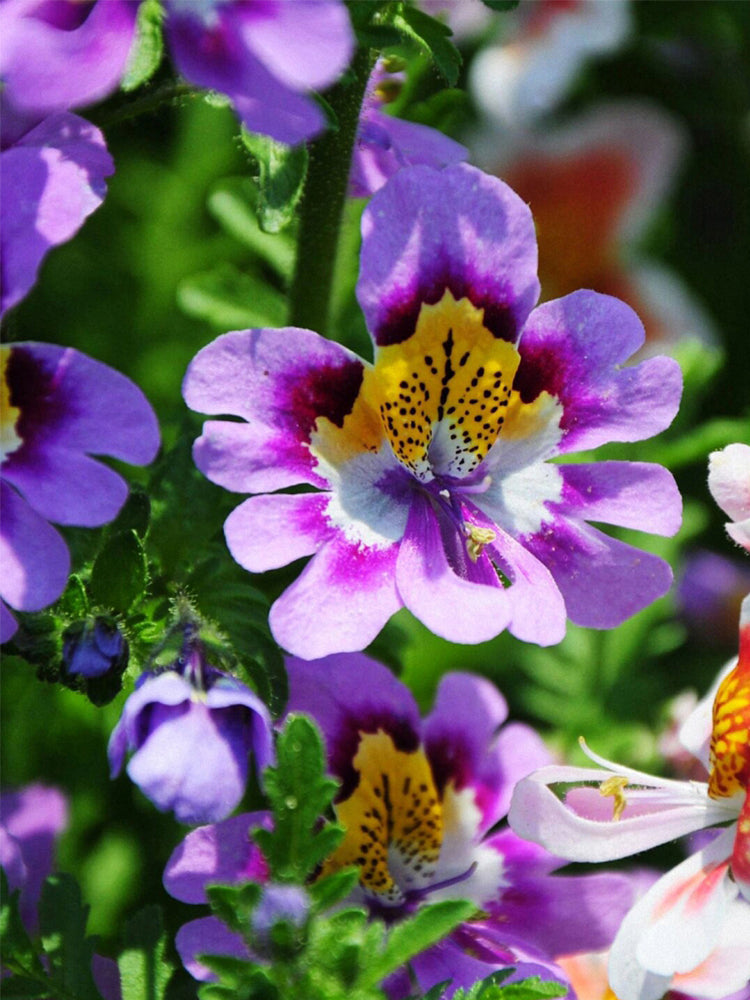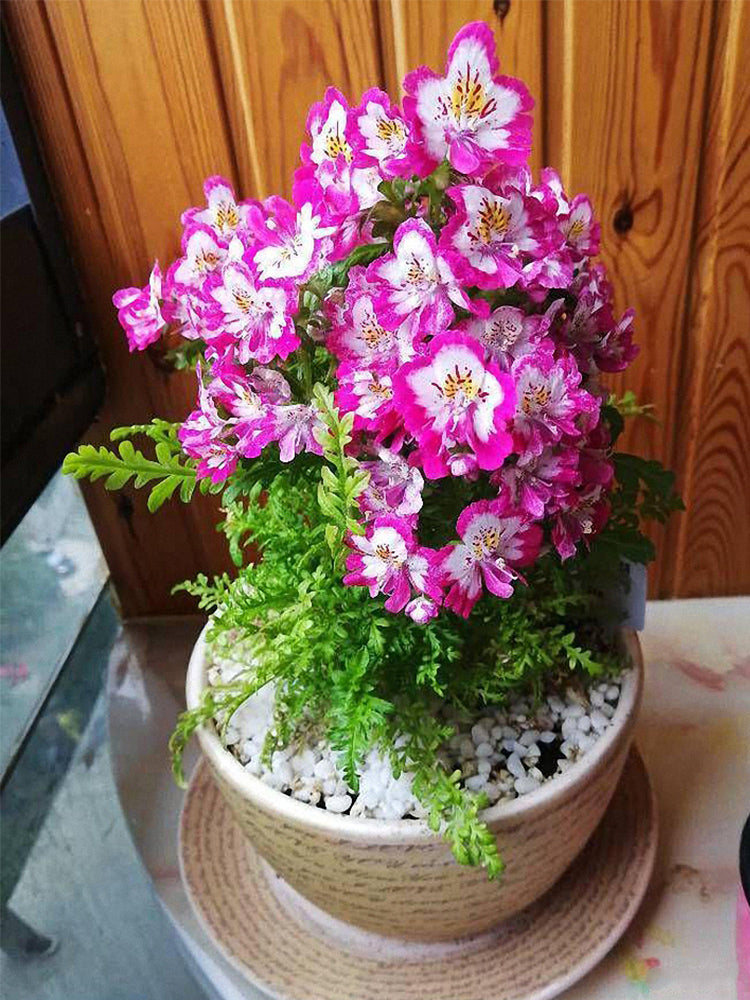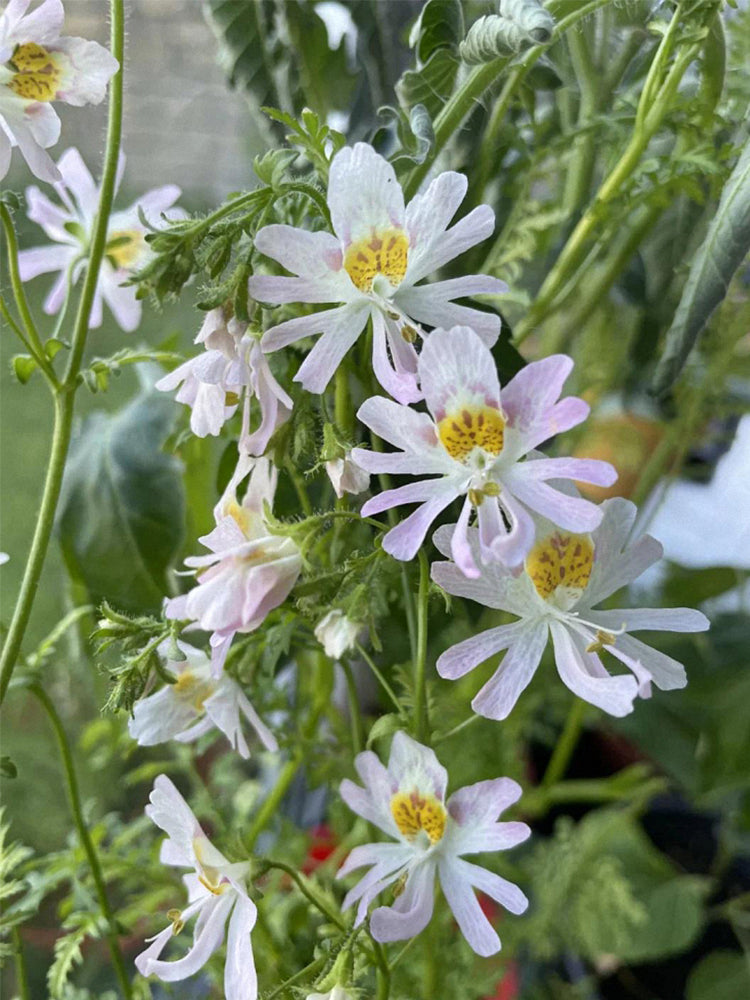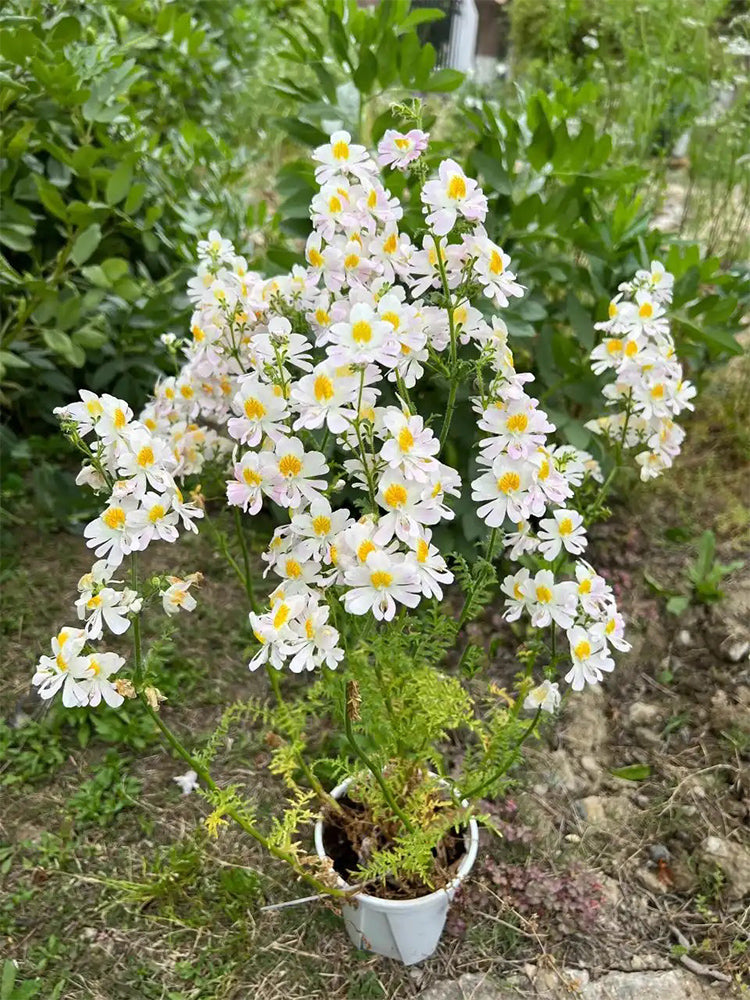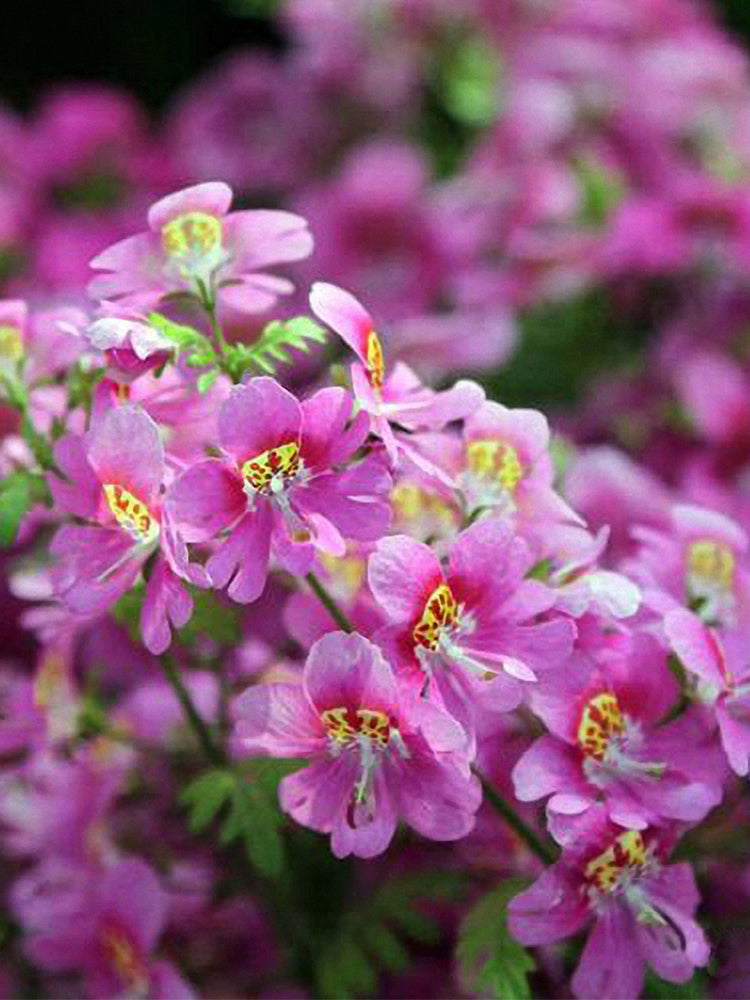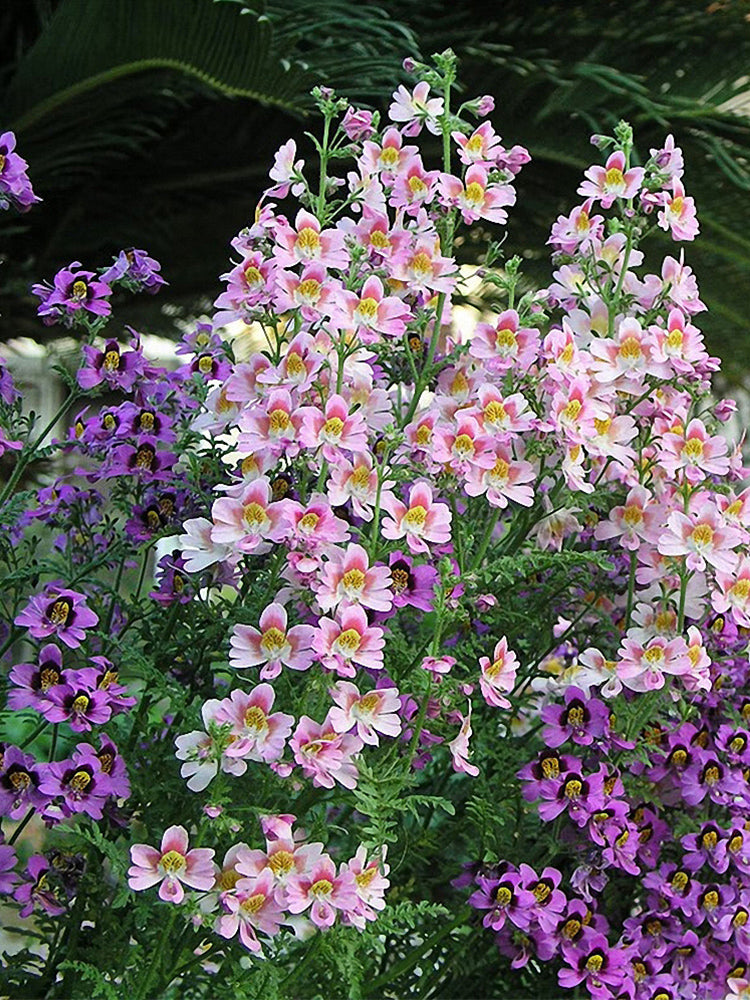BELLFARM
Poor man's Orchid (Schizanthus pinnatus)
Sale
Sold out
Regular price
$3.99 USD
Regular price
$6.99 USD
Sale price
$3.99 USD
Unit price
per
Couldn't load pickup availability
-
5-14 Days delivery.
-
Ship out within 24 hours.
Main characteristics of the variety:
- Schizanthus pinnatus is a biennial or annual herbaceous plant of the genus Schizanthus in the Solanaceae family, native to Chile. The plant is sparsely covered with slightly sticky glandular hairs, and the horticultural dwarf variety grows to 30–45 cm in height. Its leaves are alternate, the corolla has a diameter of 3–4 cm, and the overall flower shape is highly similar to that of an orchid, often featuring contrasting markings at the base of petals, such as yellow patches and red/purple veins. The flowering period is concentrated in March and April, with rich flower colors, including pure white, deep red, blue-purple, etc. This variety prefers a cool and mild climate, thrives in sunny conditions, and has strong cold resistance along with moderate heat tolerance. It should be placed in a sunny location during winter. It requires fertile and well-drained soil, with an optimal growth temperature of 15–25℃. Due to its abundant flowering, long blooming period, and vibrant colors, it can be used to decorate spring flower beds and is also suitable for indoor potted flower display. In garden applications, it is often cultivated at the edge of lawns, along waterfront banks, around courtyard walls, or in flower borders. It can also be used for greening flower beds, flower platforms, and steps in front of courtyards, making it an excellent ornamental herb that combines both aesthetic value and practicality.
- Schizanthus pinnatus is a biennial or annual herbaceous plant of the genus Schizanthus in the Solanaceae family, native to Chile. The plant is sparsely covered with slightly sticky glandular hairs, and the horticultural dwarf variety grows to 30–45 cm in height. Its leaves are alternate, the corolla has a diameter of 3–4 cm, and the overall flower shape is highly similar to that of an orchid, often featuring contrasting markings at the base of petals, such as yellow patches and red/purple veins. The flowering period is concentrated in March and April, with rich flower colors, including pure white, deep red, blue-purple, etc. This variety prefers a cool and mild climate, thrives in sunny conditions, and has strong cold resistance along with moderate heat tolerance. It should be placed in a sunny location during winter. It requires fertile and well-drained soil, with an optimal growth temperature of 15–25℃. Due to its abundant flowering, long blooming period, and vibrant colors, it can be used to decorate spring flower beds and is also suitable for indoor potted flower display. In garden applications, it is often cultivated at the edge of lawns, along waterfront banks, around courtyard walls, or in flower borders. It can also be used for greening flower beds, flower platforms, and steps in front of courtyards, making it an excellent ornamental herb that combines both aesthetic value and practicality.
